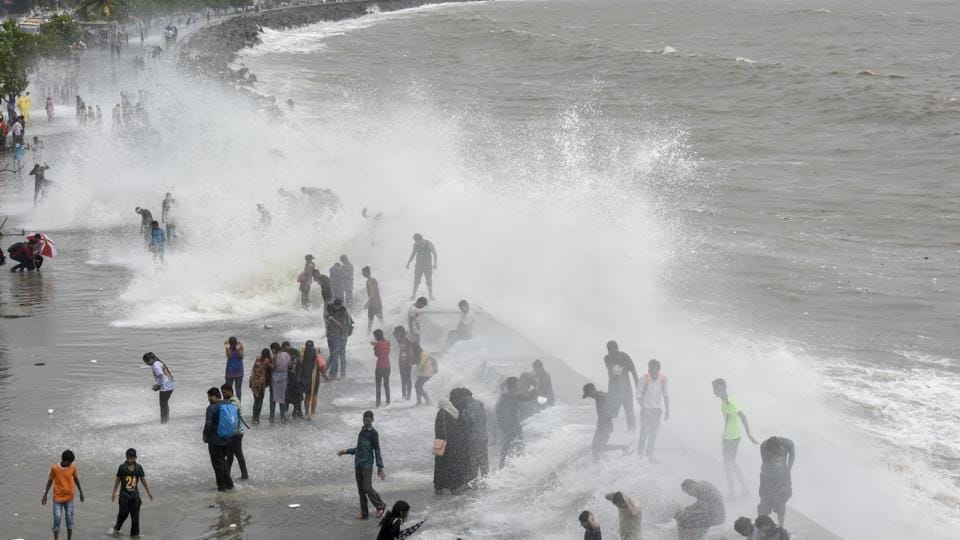
Each time Mumbai is battered by heavy rain and stormy winds that pause the city’s frenetic rhythms of work and life, we search the archives of our memories and the internet to see if this day’s was the worst ever in a month or a decade, or the second-worst, or the worst since that fateful day in July 2005. Anecdotes abound, people speak of how the weather is no longer what it used to be in the city even three decades ago, how the winters are a tad sharper and the monsoon has turned erratic and harsher.
Mumbai’s monsoon appears to have changed in nature, going by the large volumes of meteorological and hydrological data available: There have been more extreme rain events and storms in the past decade than there used to be; there are sharp spikes showing torrential rain on a handful of days every monsoon in the past seven years, according to the rain graphs put out by the Indian Meteorological Department; land and sea temperatures have risen and sea levels are quietly rising.
Is climate change expressing itself? The jury is still out, say the experts. Never mind that, data shows Mumbai has witnessed a greater number of torrential rain events accompanied by fierce stormy winds and an angry sea in the past few years. The risks of coastal flooding, tropical cyclones, sea-water intrusion have been pointed out in a number of recent national and international studies.
Four years ago, reputed international monthly scientific journal, Nature Climate Change placed Mumbai fifth among world cities that will be affected by flooding. Noted author Amitav Ghosh lucidly alerted us, in his non-fiction book The Great Derangement: Climate Change and the Unthinkable, that the Arabian Sea is likely to witness an increase in cyclonic activity.
Nearly 40% of Mumbai could be underwater in the next 100 years if sea levels continue to rise and about 190 sq km of Mumbai’s 458.53 sq km could be flooded, pointed out a research paper by scientists from National Institute of Oceanography (NIO) led by R Mani Murali, according to a report in this newspaper in December last year. The report after the July 2005 flooding by the well-known hydrologist Madhav Chitale put out a comprehensive list of recommendations for the city that its planners and administrators ought to have done.
It bears repetition that Mumbai is a coastal city with many low-lying areas and mudflats, large stretches of the city sit on land reclaimed from the sea and constructed upon, the natural drainage system of the city – its rivers, creeks, open areas and mangroves – continue to be threatened by unbridled construction. The July 2005 flood unmasked the city’s vulnerability to extreme rain events and urban flooding.
An entire body of literature, constantly revised and updated, now exists on how large cities can cope with extreme weather events including torrential rain, and how climate change impacts are best factored into urban planning and building codes. Climate change impacts touch everything, from structural stability of buildings and transport network to human health and economic cycles. But, in the past decade, when Mumbai should have been better prepared for extreme weather (rain) events, there was hardly any concerted effort on this front.
Policy discussions revolved around increasing the Floor Space Index or how much of a plot can be built upon, or on grand eye-popping stand-alone projects. Public discussions about climate change and the city were few and far between, and limited to certain sections of Mumbaiites. It may already be late. Foregrounding climate change into planning and policy is the need of the hour.
We ignore nature’s signs – at our own peril.